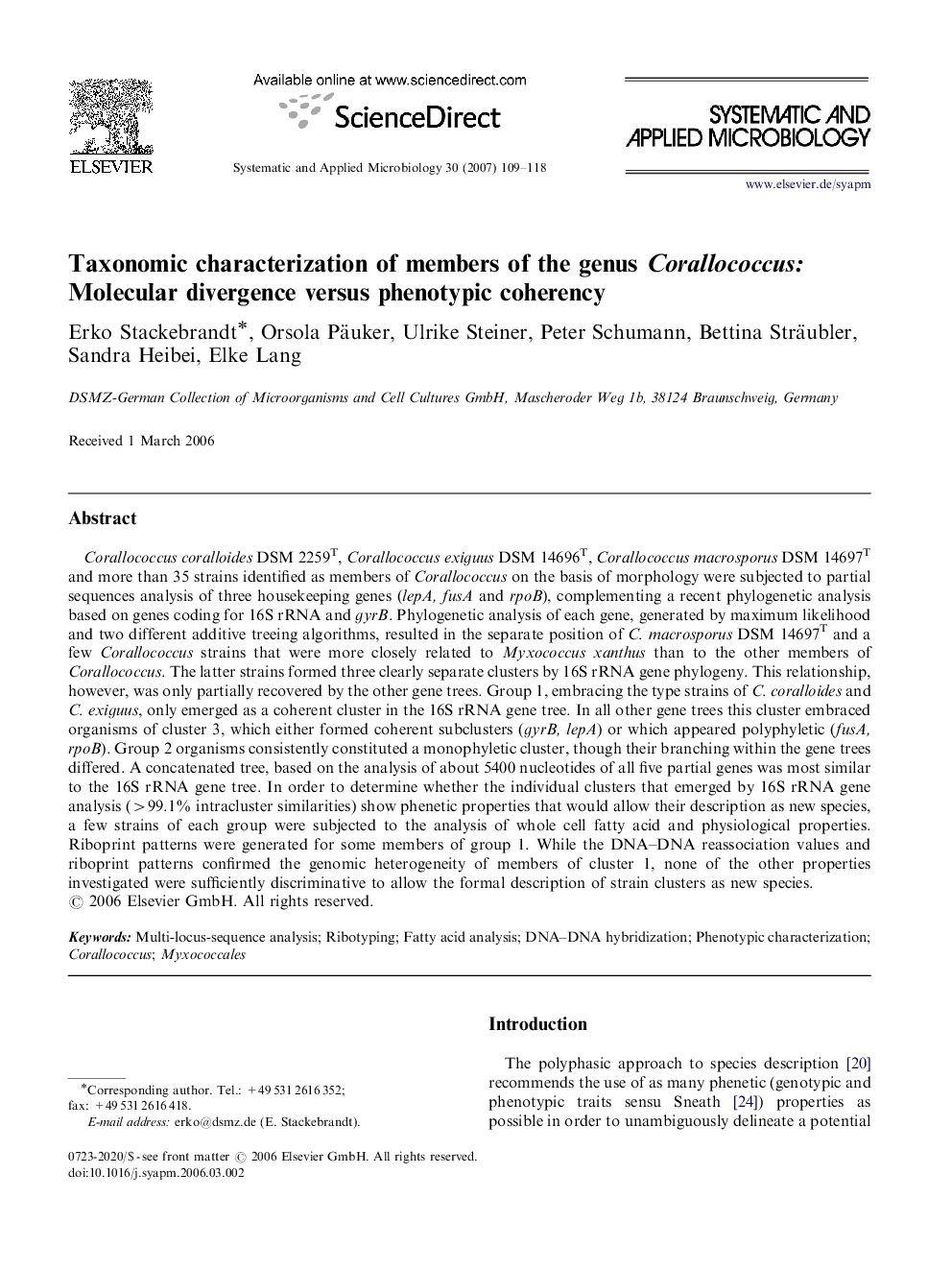| کد مقاله | کد نشریه | سال انتشار | مقاله انگلیسی | نسخه تمام متن |
|---|---|---|---|---|
| 2063455 | 1076679 | 2007 | 10 صفحه PDF | دانلود رایگان |

Corallococcus coralloides DSM 2259T, Corallococcus exiguus DSM 14696T, Corallococcus macrosporus DSM 14697T and more than 35 strains identified as members of Corallococcus on the basis of morphology were subjected to partial sequences analysis of three housekeeping genes (lepA, fusA and rpoB), complementing a recent phylogenetic analysis based on genes coding for 16S rRNA and gyrB. Phylogenetic analysis of each gene, generated by maximum likelihood and two different additive treeing algorithms, resulted in the separate position of C. macrosporus DSM 14697T and a few Corallococcus strains that were more closely related to Myxococcus xanthus than to the other members of Corallococcus. The latter strains formed three clearly separate clusters by 16S rRNA gene phylogeny. This relationship, however, was only partially recovered by the other gene trees. Group 1, embracing the type strains of C. coralloides and C. exiguus, only emerged as a coherent cluster in the 16S rRNA gene tree. In all other gene trees this cluster embraced organisms of cluster 3, which either formed coherent subclusters (gyrB, lepA) or which appeared polyphyletic (fusA, rpoB). Group 2 organisms consistently constituted a monophyletic cluster, though their branching within the gene trees differed. A concatenated tree, based on the analysis of about 5400 nucleotides of all five partial genes was most similar to the 16S rRNA gene tree. In order to determine whether the individual clusters that emerged by 16S rRNA gene analysis (>99.1% intracluster similarities) show phenetic properties that would allow their description as new species, a few strains of each group were subjected to the analysis of whole cell fatty acid and physiological properties. Riboprint patterns were generated for some members of group 1. While the DNA–DNA reassociation values and riboprint patterns confirmed the genomic heterogeneity of members of cluster 1, none of the other properties investigated were sufficiently discriminative to allow the formal description of strain clusters as new species.
Journal: Systematic and Applied Microbiology - Volume 30, Issue 2, 8 March 2007, Pages 109–118